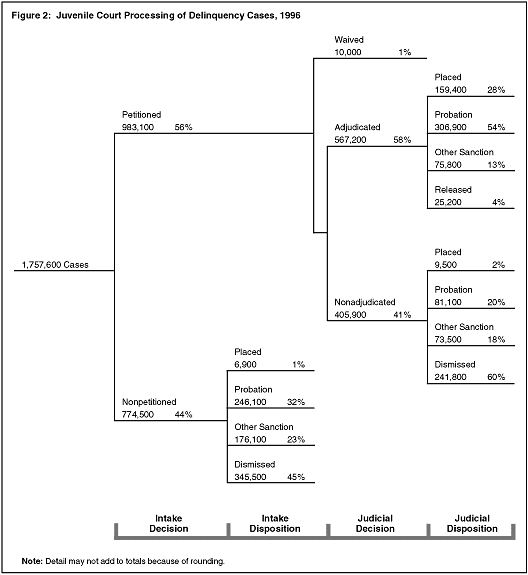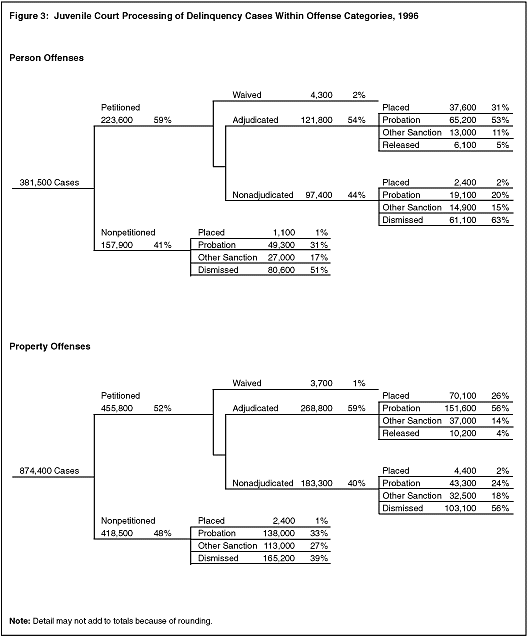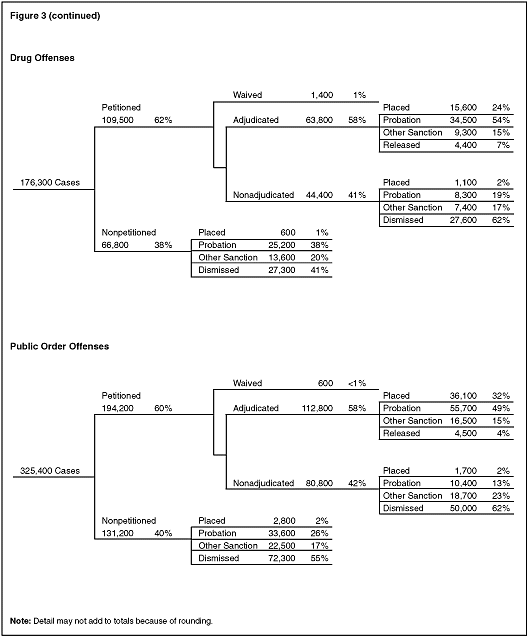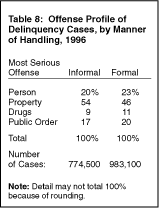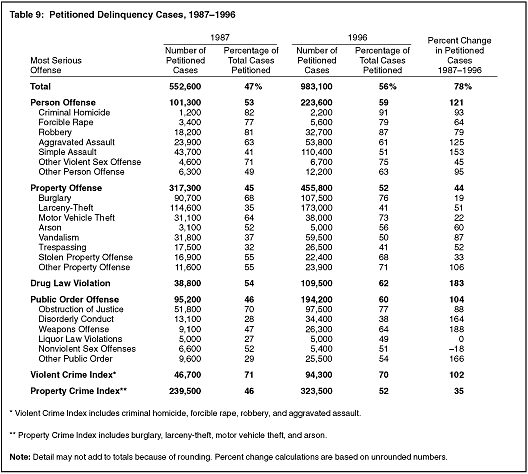|
More than half (56%) of the delinquency cases disposed by juvenile courts in 1996 were processed formally (figure 2). Formal processing involves the filing of a petition requesting an adjudicatory or waiver hearing. Informal cases, on the other hand, are handled without a petition and without an adjudicatory or waiver hearing. The court dismissed nearly half of the informally handled (nonpetitioned) delinquency cases. Most of the remainder resulted in voluntary probation or other dispositions, but a small proportion involved voluntary out-of-home placements.
Among person offense, drug law violation, and public order cases, approximately 6 in 10 cases were handled formally by juvenile courts in 1996 (figure 3). Among property offense cases, the proportion of cases processed formally was just over half. As a result of this differential handling, formally processed cases in 1996 involved a higher proportion of person, drug, and public order offenses and a lower proportion of property offense cases when compared with the informally handled delinquency caseload (table 8).
Intake decisions varied among each of the four major offense categories. A detailed analysis of referral offenses showed that the likelihood of formal handling was greater for more serious offenses within the same general offense category. In 1996, for example, 61% of aggravated assault cases were handled formally compared with 51% of simple assault cases (table 9). Similarly, three-quarters of burglary and motor vehicle theft cases were handled formally by juvenile courts, compared with 41% of larceny-theft cases and 50% of cases in which vandalism was the most serious charge.
The likelihood of formal processing for delinquency referrals increased between 1987 and 1996, rising from 47% to 56%. The change in the proportion of cases formally processed varied across offenses. For example, the proportion of cases handled formally rose from 54% to 62% for drug law violations and from 27% to 49% for delinquency liquor law violations but dropped from 63% to 61% for aggravated assault cases.
As a result of the increase in the number of cases referred to juvenile court intake and the greater likelihood of petitioning, the number of formally processed delinquency cases increased 78%
between 1987 and 1996, from 552,600 cases to 983,100. The single largest percent change was for weapons offense cases, with juvenile courts formally processing 188% more of these cases in 1996 than in 1987. Other large increases were seen in formally handled drug law violation cases (188%), disorderly conduct cases (164%), simple assault cases (153%), aggravated assault cases (125%), and cases involving criminal homicide (93%).
|
